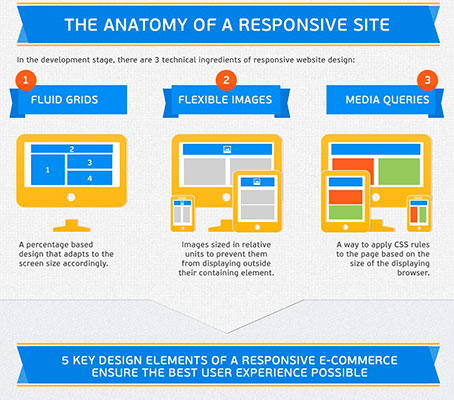Crafting A User-Friendly Website: Techniques And Techniques For Web Design Success
Crafting A User-Friendly Website: Techniques And Techniques For Web Design Success
Blog Article
Web Content Writer-Dixon Mccarthy
Master the art of website design by focusing on customer experience. Craft instinctive navigating and select mobile optimization to boost the surfing experience. Ensure very easy navigating with clear headings and appealing visuals. Prioritize mobile responsiveness for a regular individual experience. By incorporating these vital layout concepts, you can produce an user-friendly website that astounds visitors.
Essential Style Concepts
When designing an internet site, focus on user experience above all else. Your major goal must be to create a seamless and pleasurable experience for your visitors. Begin by making sure that your website is simple to browse. Use clear headings, organized menus, and user-friendly buttons to direct customers via your material effortlessly. Keep in mind, simplicity is essential. Stay clear of littering your pages with unnecessary components that can bewilder or perplex your target market.
Another essential design principle is to make sure your site is aesthetically appealing. Pick a cohesive color pattern, high-quality photos, and legible typefaces to improve the general appearance of your site. Consistency is critical in establishing a strong brand identification and making your internet site more remarkable to customers.
Additionally, prioritize mobile responsiveness. With more people browsing the web on their smartphones and tablets, it's vital that your website looks and works well on all devices. Check your site on various screen sizes to make sure a smooth experience for all customers. By concentrating on these important layout principles, you can create an user-friendly site that maintains visitors returning for even more.
User-Focused Navigating
To improve individual involvement and improve their browsing experience, prioritize developing intuitive navigating paths that direct site visitors seamlessly with your website. Clear and efficient navigating is essential for aiding users locate the information they need swiftly and successfully. Beginning by maintaining https://emailmarketingservice29506.creacionblog.com/29745256/regional-search-engine-optimization-providers-what-every-small-business-proprietor-demands-to-know and easy to understand. Use descriptive labels that clearly suggest what web content can be located under each menu option. Additionally, think about executing dropdown menus for subcategories to avoid congestion the major navigating bar.
An additional vital element of user-focused navigating is making use of breadcrumbs. Breadcrumbs are a second navigating help that shows users their present place on the internet site and enables them to quickly navigate back to previous web pages. This feature is specifically valuable for customers that enter your website through a deep web link or an online search engine outcome.
Moreover, integrating search functionality plainly on your internet site can additionally enhance customer navigating. A search bar permits customers to rapidly find specific material without having to click with several web pages. https://restauranttechnologynews.com/2022/03/seo-tips-and-tricks-restaurants-can-use-to-improve-their-online-search-results/ that your search bar is conveniently visible and easily accessible on every web page of your site for maximum functionality. By prioritizing user-focused navigating methods, you can produce an extra instinctive and delightful surfing experience for your site visitors.
Mobile Optimization Techniques
Take into consideration optimizing your site for mobile devices to guarantee a seamless user experience throughout different screen dimensions. https://holdenlgavp.webdesign96.com/30372535/carefully-select-a-digital-marketing-company-for-your-service-by-considering-your-objectives-financial-resources-and-relevant-market-knowledge-in-order-to-achieve-success is vital in today's electronic landscape where a substantial portion of web surfing happens on mobile phones and tablets.
To boost mobile use, start by implementing receptive design strategies. This technique enables your web site to adjust to different display dimensions, keeping performance and aesthetics.
Focus on enhancing filling times for mobile individuals. Slow-loading internet sites can hinder visitors and impact your internet search engine rankings. Press pictures, minimize HTTP requests, and leverage web browser caching to boost loading speed. Furthermore, prioritize web content power structure for mobile screens. Ensure that important info is plainly presented, and navigation is intuitive, promoting very easy accessibility to crucial areas.
Use touch-friendly elements such as larger switches and structured kinds to help with communication on mobile phones. Conduct complete testing throughout different mobile platforms to identify and rectify any kind of use issues.
Final thought
Finally, grasping the art of web design is critical for producing an easy to use website. By incorporating necessary design concepts, user-focused navigation, and mobile optimization methods, you can ensure a seamless and enjoyable experience for your visitors.
For example, a regional pastry shop saw a 30% boost in on the internet orders after revamping their website to be more easy to use and mobile-responsive. Bear in mind, a well-designed website can make all the difference in bring in and keeping customers.
